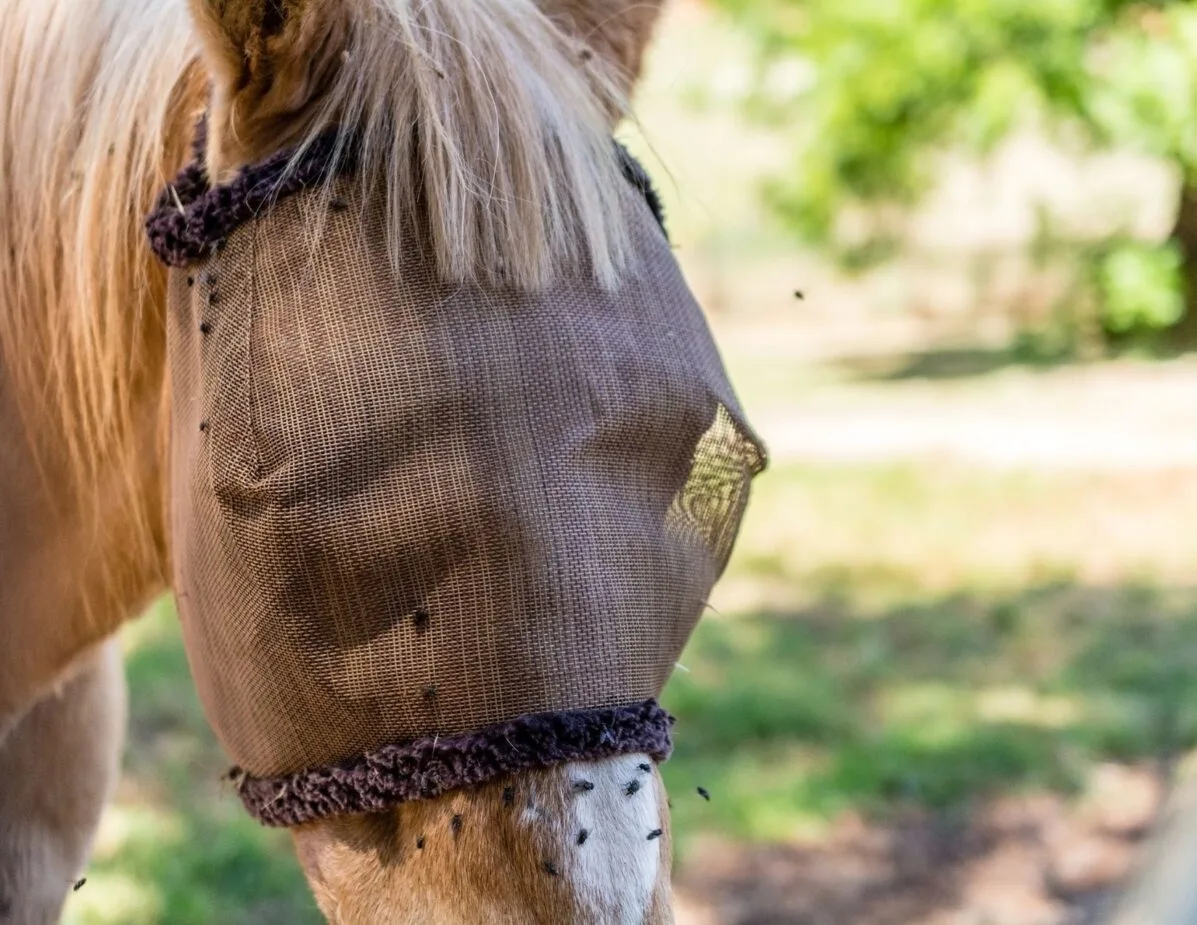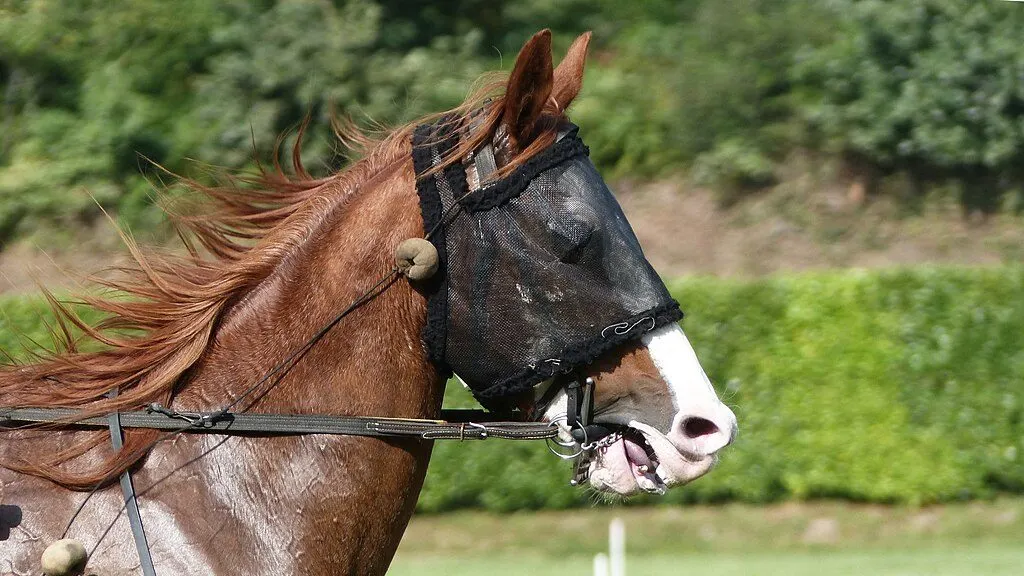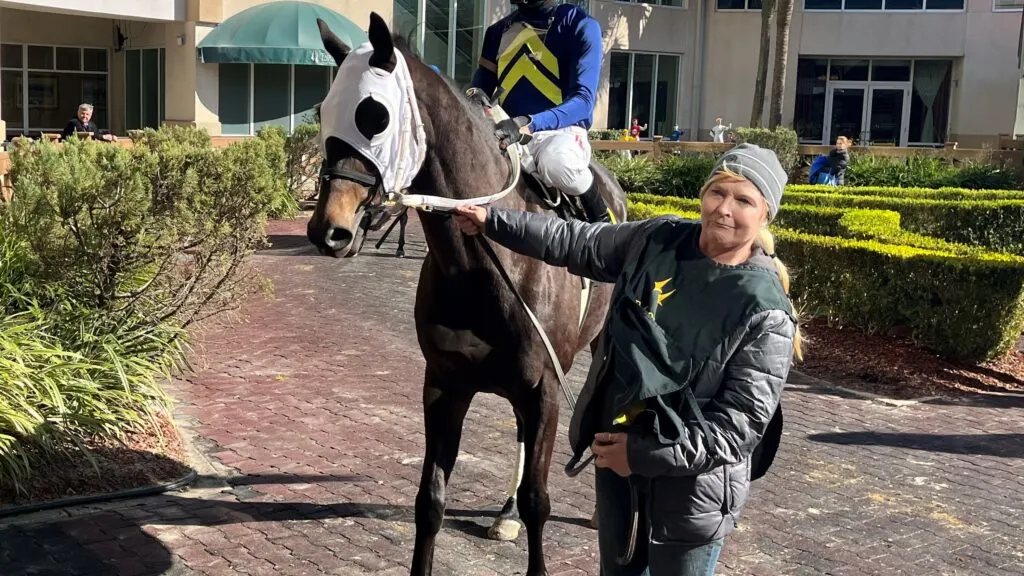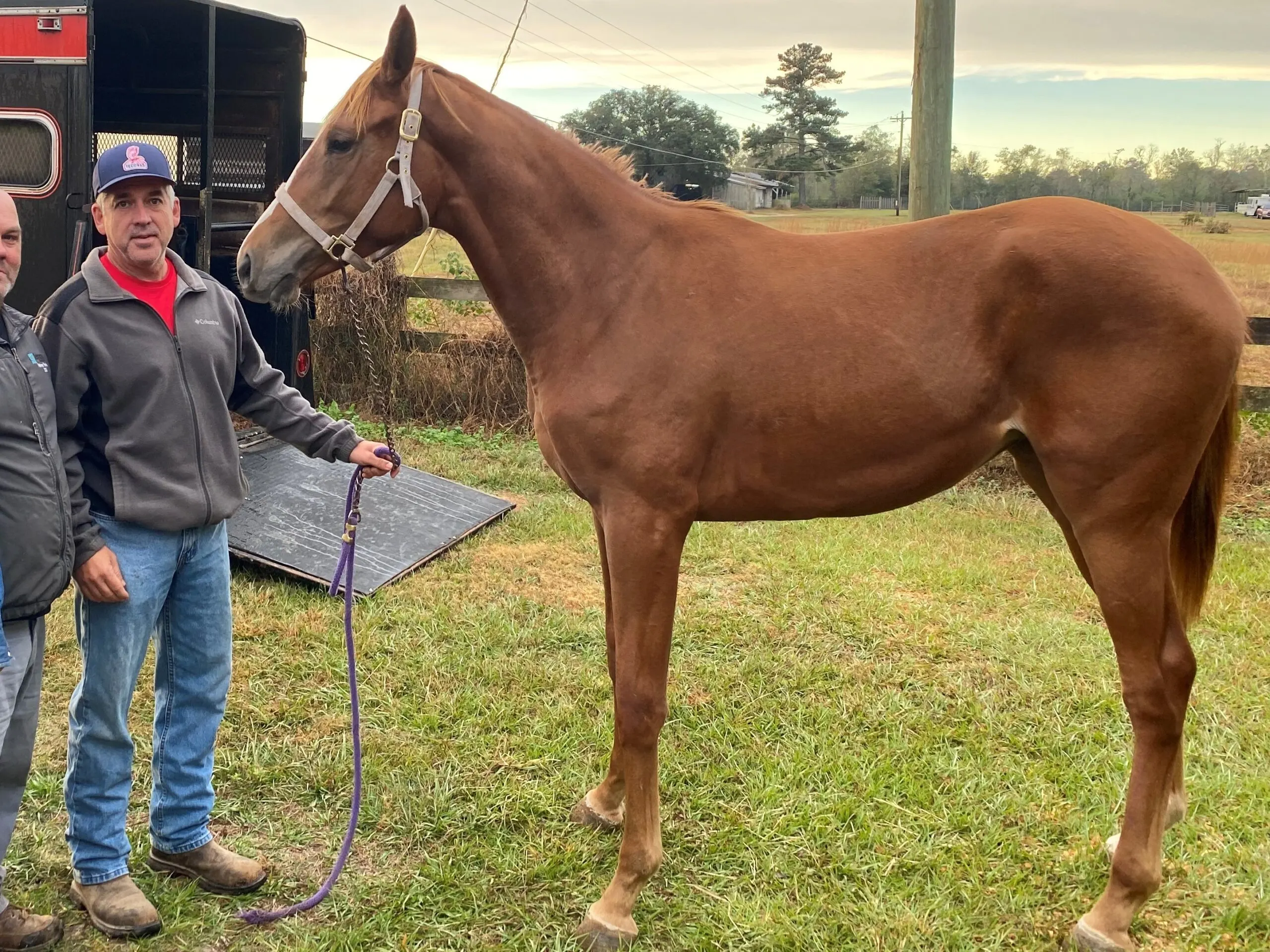Last updated: February 15, 2024
Any links on this page that lead to products on Amazon are affiliate links and I earn a commission if you make a purchase. Thanks in advance – I really appreciate it!
Did you know that horse masks are more than just equine fashion? They’re indispensable tools for their health and performance. Having been raised around horses and owning them for years, I’ve witnessed firsthand the many ways masks shield our equine companions from flies, harmful UV rays, and dust and even help racehorses.
Let’s dive into the reasons behind the use of horse masks and uncover their varied applications together.”

Why Do Horses Wear Masks?
Horse masks are essential tools in equine care, designed to protect horses from a variety of environmental hazards. Each type of mask serves a specific function, directly contributing to the horse’s health, comfort, and performance. Here’s an overview of the most common types of horse masks, their purposes, and the benefits they offer.

Fly Masks
- Purpose: To protect horses from flies and other insects, preventing eye infections and diseases like conjunctivitis.
- Benefits: Fly masks keep pests away, significantly reducing stress and the risk of eye-related health issues. They are particularly crucial during warmer months in insect-prone areas, allowing horses to graze and move comfortably without the annoyance of insects.
UV Protection Masks
- Purpose: To shield the horse’s eyes from harmful UV rays, preventing sunburn on the sensitive skin around the eyes and nose and reducing the risk of developing cataracts.
- Benefits: These masks are akin to sunglasses for horses, offering protection, especially in sunny climates or for horses with light-sensitive eyes. They ensure the horse’s eyes are safeguarded against the sun’s damaging effects, promoting overall eye health.

Dust and Debris Masks
- Purpose: To act as a barrier against dust, debris, and airborne irritants, preventing eye irritation and infections.
- Benefits: Essential for horses in dry, windy climates or those exposed to environments with high levels of airborne particles. These masks keep the horse’s eyes clean and comfortable, mitigating the risk of irritation and infections caused by dust and debris.
Racing and Training Masks
- Purpose: Often used to house blinkers that focus a racehorse’s vision forward, reducing distractions and protecting the eyes from dirt and debris during high-speed activities.
- Benefits: These masks are specialized for performance, enhancing focus and performance by reducing wind resistance and protecting against environmental hazards. They are crucial for horses involved in racing and training, providing both safety and a competitive edge.

The Impact of Choosing the Right Mask
Selecting the appropriate mask for your horse is vital. The right mask not only protects against specific environmental hazards but also contributes to the horse’s overall well-being. It can prevent a range of health issues, from eye infections to skin irritations, and improve the horse’s comfort and performance.
Whether it’s a fly mask for everyday use, a UV protection mask for sunny days, a dust mask for windy environments, or a racing mask for competitive training, each serves an essential purpose in equine care.
FAQs on Horse Masks
Why do horses need to wear masks?
Horses need to wear masks for protection against flies, harmful UV rays, dust, and debris. Masks help prevent eye infections, skin irritations, and other health issues, enhancing the horse’s comfort and well-being.
Can horses see clearly wearing masks?
Yes, horses can see clearly while wearing masks. The materials used in horse masks are designed to allow for visibility while protecting the eyes from irritants and hazards.
How often should I clean my horse’s mask?
Clean the mask regularly, depending on use and exposure to dirt and debris. For daily use, weekly cleaning is recommended, but adjust the frequency as needed to ensure the mask remains effective and hygienic.
Can a horse wear a mask all day?
Many horses can comfortably wear a mask all day, especially if it’s well-fitted and made from breathable materials. However, it’s important to regularly check the mask for any signs of rubbing or discomfort and to give your horse breaks from wearing it if necessary.
Do all horse masks offer UV protection?
Not all horse masks offer UV protection. If your horse is particularly sensitive to sunlight or you live in a sunny climate, look for masks specifically designed with UV-blocking materials.
Can you ride a horse while it’s wearing a fly mask?
Yes, you can ride a horse while it’s wearing a fly mask. Fly masks are designed to protect the horse’s eyes and face from flies and other insects without obstructing their vision. When riding, especially in areas with high insect activity, a fly mask can help keep your horse focused and comfortable.
Conclusion: Why Do Horses Wear Masks?
Throughout this article, we’ve explored the significant roles horse masks play in ensuring the health, comfort, and performance of horses. From protecting against flies, UV rays, and dust to aiding in racing and training, the right mask can make a substantial difference in a horse’s well-being.
We’ve delved into the types of masks available, each serving a unique purpose, and discussed how to select the right one based on specific needs and conditions. Safety, comfort, and proper maintenance were highlighted as key considerations for maximizing the benefits of horse masks.
The importance of selecting the appropriate mask cannot be overstated, as it directly impacts a horse’s quality of life. By considering the factors discussed, horse owners can make informed decisions that contribute to the health and happiness of their equine companions.
Call to Action
We encourage our readers to share their own experiences or tips regarding horse masks. Your insights could greatly benefit others in our community, fostering a dialogue that enriches our collective knowledge on equine care. Whether you have a personal story about how a particular mask benefited your horse or practical advice on maintenance, we’d love to hear from you.
List of Authorities
For further reading and expert advice, consider exploring the following resources:
These sources offer a wealth of information on equine health and care, providing valuable insights from leading experts in the field.
Meet Miles Henry
An avid equestrian and seasoned racehorse owner, Miles Henry brings his extensive experience to the equine world, proudly associating with the AQHA, The Jockey Club, and various other equine organizations. Beyond the racetrack, Miles is an accomplished author, having published various books about horses, and is a recognized authority in the field, with his work cited in multiple publications.
🔗 Connect with Miles:
Twitter
Facebook
YouTube: Check out race highlights, horse care tips, and more!

